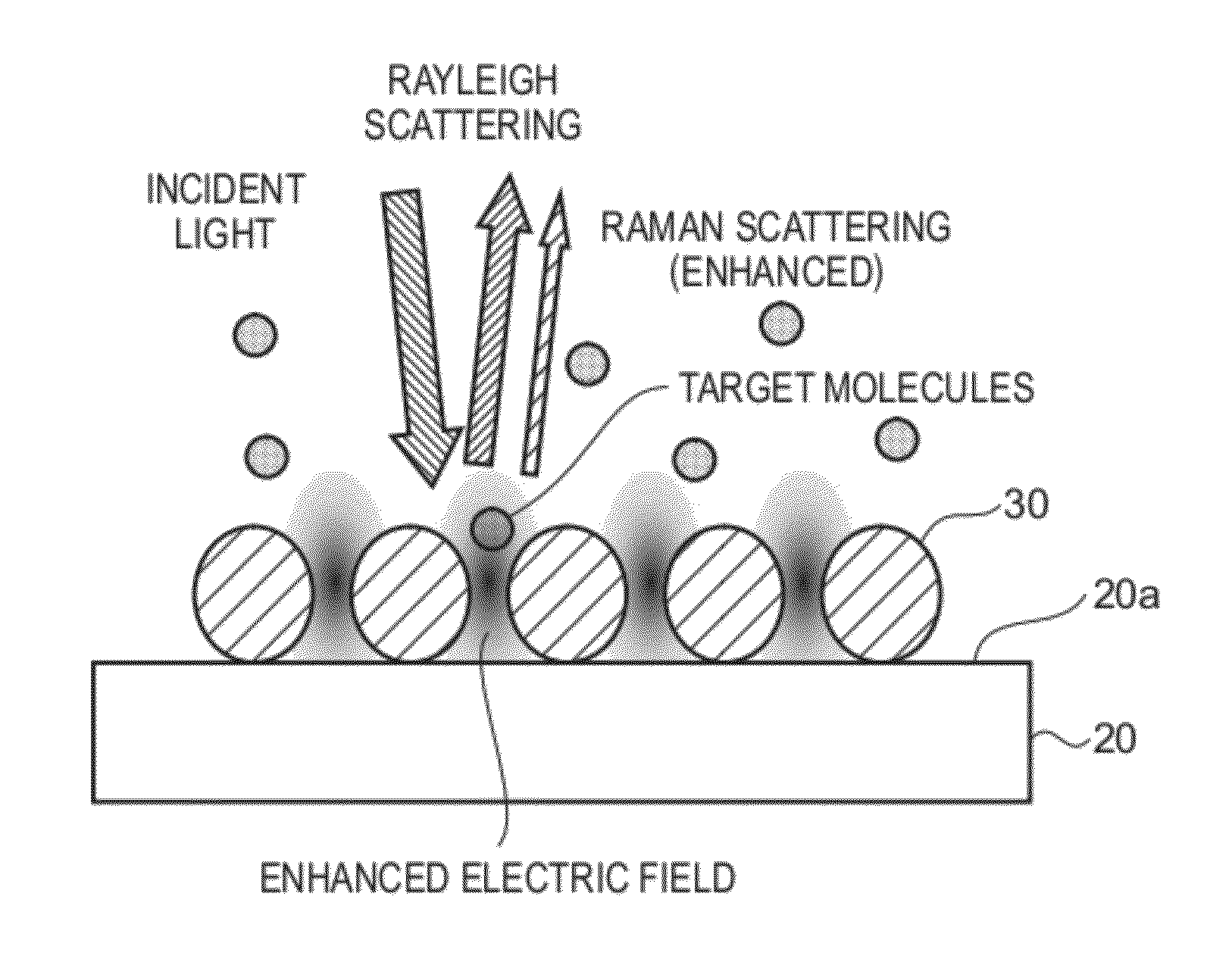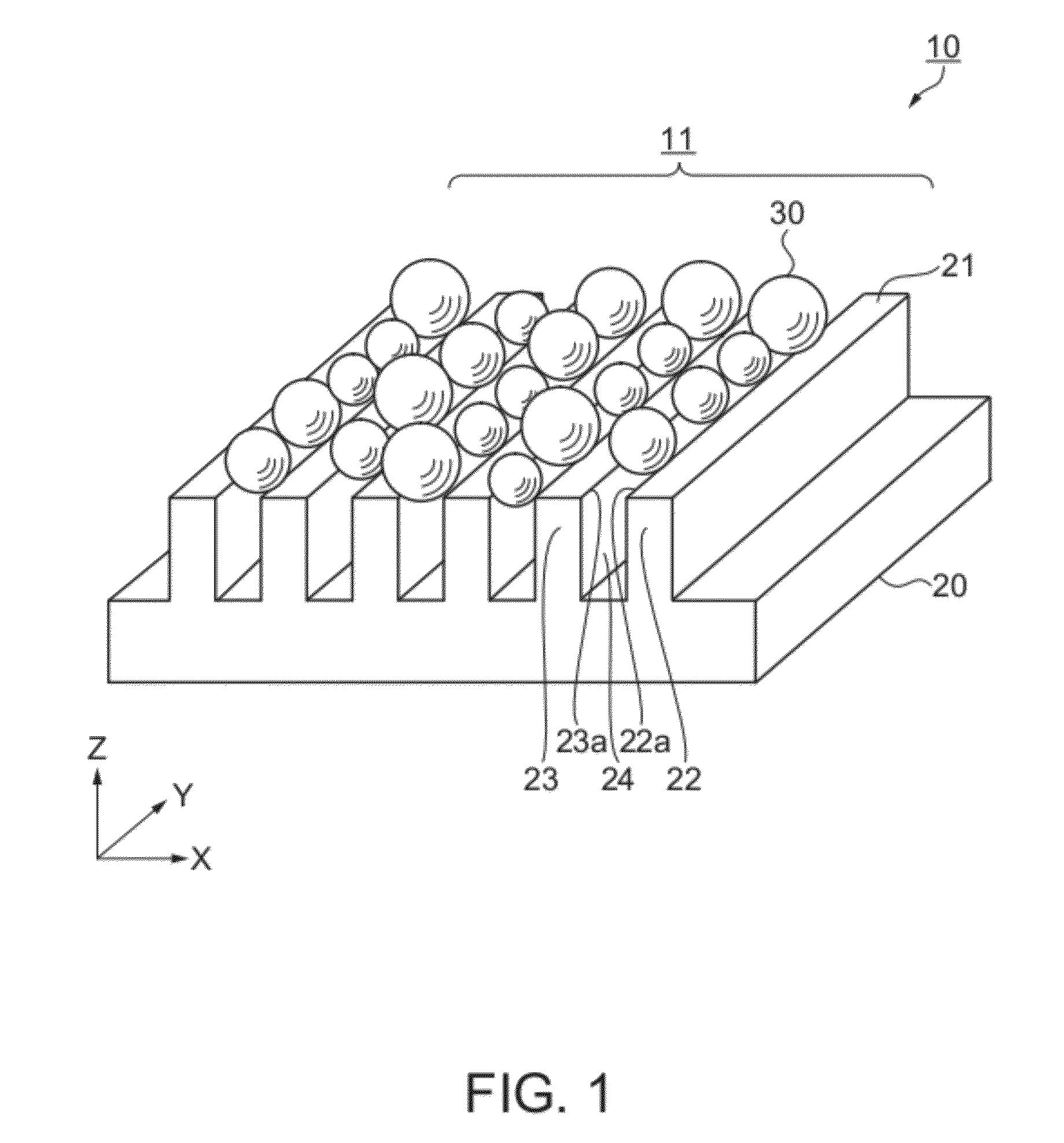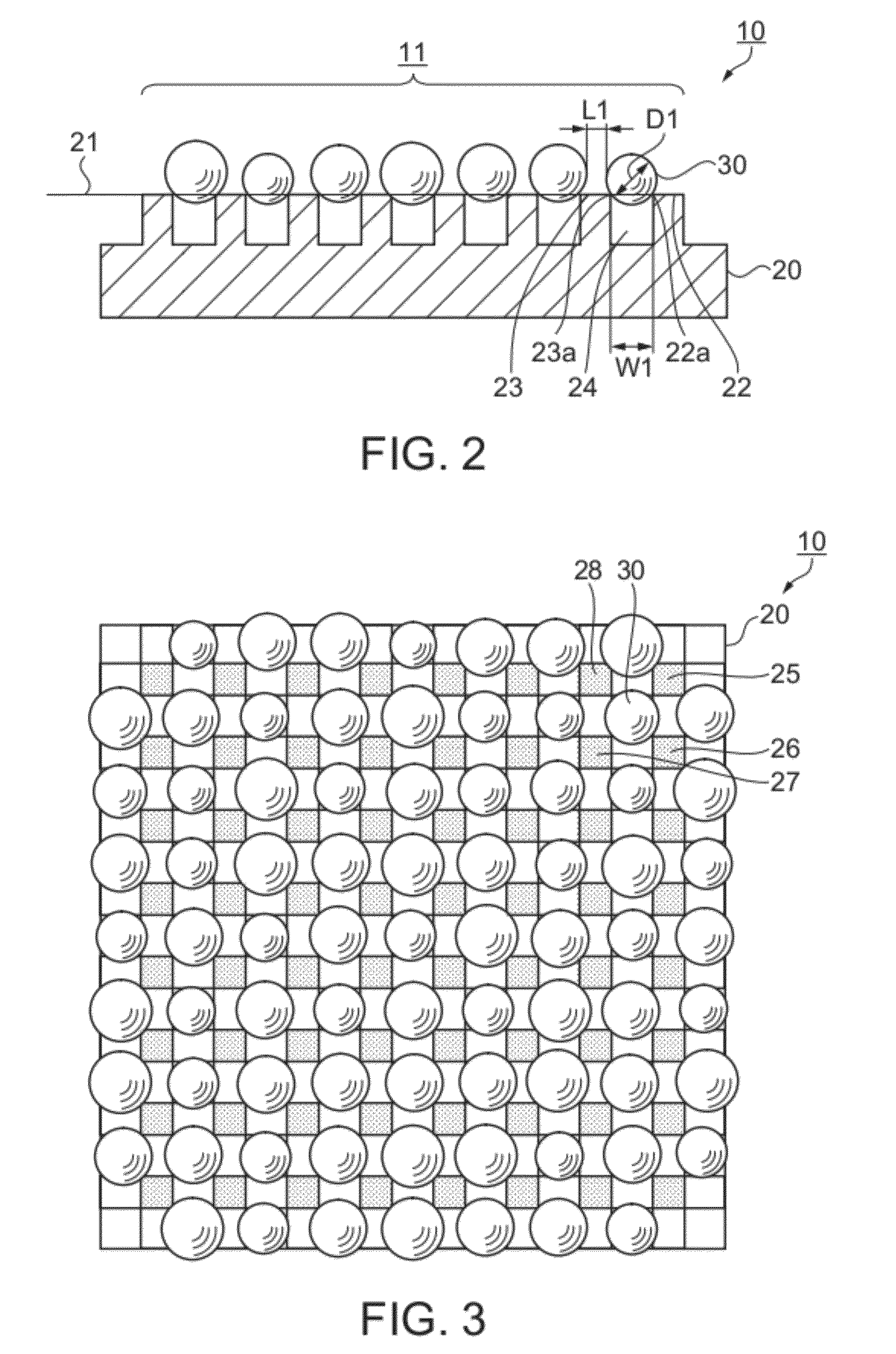Sensor chip, detection device, and method of manufacturing sensor chip
a sensor chip and detection device technology, applied in the direction of optical radiation measurement, instruments, spectrometry/spectrophotometry/monochromators, etc., can solve the problems of large number of fine metal particles wasted, low variation of detecting the variation in the vicinity of the fine metal particle, and limited improvement of sensor sensitivity, etc., to achieve high sensitivity
- Summary
- Abstract
- Description
- Claims
- Application Information
AI Technical Summary
Benefits of technology
Problems solved by technology
Method used
Image
Examples
first embodiment
Sensor Chip / First Embodiment
[0045]FIG. 1 is a perspective view showing a part of a sensor chip according to a first embodiment of the invention, and FIG. 2 is a cross-sectional view of the sensor chip. In FIGS. 1 and 2, the sensor chip 10 is composed of a relief structure formed on a surface of a substrate 20, and an aggregate of a number of fine metal particles 30. The area composed of the relief structure and the fine metal particles is defined as a sensor section 11. The material of the substrate 20 is made of a dielectric substance, and quartz, quartz crystal, glass such as borosilicate glass, silicon, and so on are suitable therefor. In the case of setting the incident light to the substrate 20 side, the substrate which is transparent with respect to the incident light is suitable, and in the case of setting the incident light to the fine metal particle side, the transparent substrate is not necessarily required.
[0046]The relief structure is formed to have a linear grating shap...
second embodiment
Sensor Chip / Second Embodiment
[0050]Subsequently, a sensor chip according to a second embodiment of the invention will be explained with reference to the accompanying drawings. The second embodiment is characterized in that the relief structure is formed to have a grid shape having a two-dimensional structure.
[0051]FIG. 3 is a plan view showing a part of the sensor chip according to the second embodiment. It should be noted that the cross-sectional structure can be expressed similarly to FIG. 2, and is therefore omitted. In FIG. 3, the relief structure has the protruding sections and the recessed sections arranged in each of the vertical and horizontal directions. Here, in the explanation showing one of the fine metal particles as an example, the fine metal particles 30 is arranged to be supported by four apexes at which respective ridgelines of the columnar protruding sections 25, 26, 27, and 28 intersect each other. In other words, setting a combination of the four intersections of...
third embodiment
Sensor Chip / Third Embodiment
[0064]Subsequently, a sensor chip according to a third embodiment of the invention will be explained with reference to the accompanying drawings. The third embodiment is characterized by being different from the first and second embodiments in the cross-sectional shape of the relief structure. Therefore, the different point will be explained.
[0065]FIG. 7 is a cross-sectional view showing a part of the sensor chip according to the third embodiment. In FIG. 7, the recessed sections of the relief structure are each formed having tilted walls (a tapered shape) with the bottom width narrower than the width on the upper surface 21 of the substrate 20. Such a shape can be applied to both of the one-dimensional structure of the first embodiment and the two-dimensional structure of the second embodiment described above (the case of the first embodiment is shown in the drawing). The fine metal particles 30 are each held by the protruding sections 22, 23 to thereby ...
PUM
 Login to View More
Login to View More Abstract
Description
Claims
Application Information
 Login to View More
Login to View More - R&D
- Intellectual Property
- Life Sciences
- Materials
- Tech Scout
- Unparalleled Data Quality
- Higher Quality Content
- 60% Fewer Hallucinations
Browse by: Latest US Patents, China's latest patents, Technical Efficacy Thesaurus, Application Domain, Technology Topic, Popular Technical Reports.
© 2025 PatSnap. All rights reserved.Legal|Privacy policy|Modern Slavery Act Transparency Statement|Sitemap|About US| Contact US: help@patsnap.com



